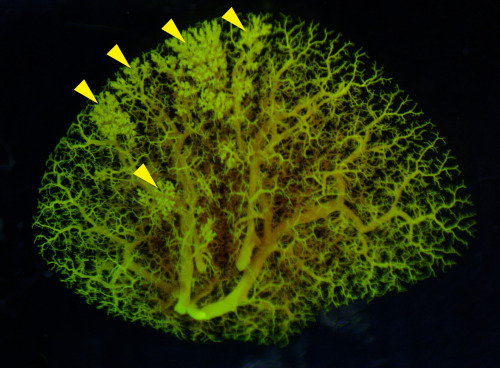#pediatrics
I haven’t told many people but late last year my son (now 15) was diagnosed with scoliosis by our family physician during his annual physical. It is mild and will hopefully stay that way but we are keeping a close eye on it. I was diagnosed at 12 when a nurse came to gym class. I don’t believe they do that anymore but they should. Early detection is very important. Check your child or request that your physician does.
Post link
Pager painting party on night float. Intern med pager, senior med pager, and peds pagers all getting glammed up in different glittery colors.
Behold: the blue diamond. Sometimes it does feel cursed just like the infamous Hope diamond.
Post link
Meet Dr. Fe Villanueva del Mundo, a well-renowned Filipina pediatrician who started the first pediatric clinic in the Philippines.
.
After graduating as valedictorian from the University of the Philippines with her medical degree in 1926, Dr. del Mundo was offered an amazing opportunity. President Manuel Quezon offered to pay for her studies in any field at any institution in the United States.
.
Not missing the chance, Dr. del Mundo furthered her education at the Children’s Hospital in Boston and Harvard Medical School where she completed her fellowship in 1939 as well as earning a master’s degree in Bacteriology at Boston University’s School of Medicine in 1940.
.
She returned to the Philippines in 1941, just before the Japanese invasion. As battles erupted, del Mundo cared for children as part of the international Red Cross and also helped form a makeshift hospice inside an internment camp.
.
Outside of establishing a children’s hospital in 1943 (after the Japanese disbanded the hospice), Dr. del Mundo is also known for her research on infectious diseases (such as dengue virus) and how they affect children.
.
And if that isn’t impressive enough, del Mundo is also known for creating an incubator out of bamboo that could be used in areas without electricity.
.
As such, Dr. Del Mundo has been given numerous awards for her service to mankind and it is our honor to pay tribute to this phenomenal woman.
.
.
#womeninscience #womeninstem #womeninmedicine #filipina #philippines #pediatrics #bacteriology #dengue #art #digitalart #digitalillustration #fedelmundo #jkxcomics
https://www.instagram.com/p/BvCeoY-BbnO/?utm_source=ig_tumblr_share&igshid=zzc8ecmhmp7h
Post link
Toddler to Preschooler (1 year - 5 years)
We all know this age group when our young ones begin to learn to talk and feed themselves. They learn to use the potty and start making new friends. This is when they love the word, “No!”
A lot of development occurs during this period of time and the growth in children, both mentally and physically are key. Here are some brief notes for you to look at for reference to what is to come with this age group:
- Increase in illness, due to being around new children and playing with them.
- Immune system will begin to grow in new environments
- Neuromuscular growth occurs as they begin to develop finer motor skills
- Brain will weigh 90% of an adult’s
- Renal development is important as they begin to learn toilet training.
- 12 to 15 months feeling of fullness is known
- 18 months ability to control bladder muscles for excretions
- Separation anxiety peeks 10 – 18 months
- Basic language is mastered at 36 months
- Age 3 – 4 most can understand full sentences.
- Children begin learning sexual differences by observing their role models and siblings
- Tip: do no try reason with children this age as to why a procedure needs to be done.
Written by: MedDaily
pediatric sedation!!! all the weapons in your arsenal (so to speak)
download my med school study guides here
Post link
Baby Hand Bones
This. Is. Dope.
Another collaboration with Dr. Yasser Al Nasser, this cartoon is for a blog post about solid food introduction for children.
For more, visit the website of Dr. Yasser, a pediatric gastroenterologist at Dr. Sulaiman Al Habib Hospital in Khobar, KSA, using the link: http://doctoryasser.com
Post link
In my theoretical case of the week apparently I’m the doctor treating a pediatric sickle cell patient. Coincidence? I think not #itsasign #futuredoctor #pediatrics #medicine #DrMcIntosh
Post link
Believe it or not, if you google “pandas” this disease does in fact make an appearance on the first page. Didn’t the consultant feel silly though when he typed it in and the first thing that appears is all these pictures of pandas.
It’s a bit obscure, but it is the abrupt onset (or sudden dramatic worsening) of OCD and/or Tourette like syndromes following infection with group A beta haemolytic strep - such as with strep throat and scarlet fever. It is thought it might be an autoimmune response (“molecular mimicry” which is a term I have fondness for), similar to sequale of rheumatic fever (valve disease, chorea).
Mostly I felt like drawing a panda. I copied it from this guy.
Post link
Glow Baby’s already growing up. The app’s getting bigger and better thanks to Glow Baby Premium, a monthly subscription for A+ parents everywhere.

Anyone can try Premium for free for a month. After that, it will cost $3.99 monthly for a year-long subscription. Subscriptions apply across all Glow company apps! Oh baby!
Stay tuned for more sweet Premium news coming up ;)

Glow’s amazing medical advisor Dr. Ari Brown, reveals 7 top things parents should know when caring for a sick baby in this Medium article.
Your baby will get sick. It’s just a reality. On average, a child gets 8 viral infections a year, each lasting 7–10 days. That’s 80 days of illness total! And 80+ days and nights of worrying for the poor parents.
Read Dr. Brown’s advice, track your baby’s health on Glow Baby, and worry less!
First we had Glow, then Nurture, then Eve. Now we’re thrilled to announce our newest app: the Glow Baby app. Starting today, the app is live (and free) on both iOSandAndroiddevices!

Glow’s mission has always been to support women, from period to parenting. Now, we’re closer than ever before, with well over 3 million users and more than 200,000 pregnancies reported by Glow women.
TheGlow Baby app tracks every miraculous moment of your baby’s first year of life.
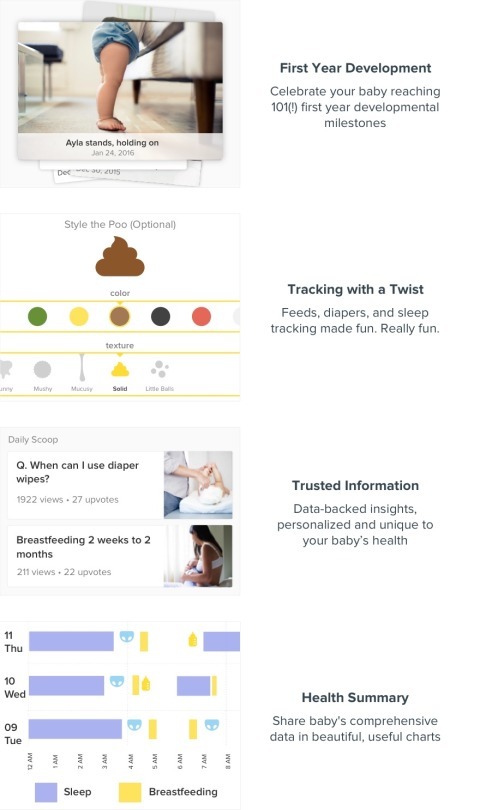
And, as always, our in-app community is here to support you through all the ups and downs. The takeaway: Parenting’s about to get a whole lot easier :)
We could not be more proud of the amazing community you have created, the inspiring women we serve. Thank you for letting us be part of your journey. We can’t wait to support all of our Glow parents, and hope you enjoy checking out Glow Baby!
Maimonides Hospital Department of Pediatrics by Evan Bennett
This hospital aims at providing a positive, colorful, and bright impression for new patients and families.
Post link
Discovery Wall by Darcy Ferrill
This pediatric center at the Mayo Clinic creates a welcoming and peaceful environment for children and their families.
Post link
by Meghan Meehan
My mother would tell you that my decision to go into nursing came as a surprise. The adjectives one typically associates with nurses, such as caring and compassionate were apparently not ones my teenage self was known for. Using a morning run during my senior year of high school as a time to pray and seek divine guidance on choosing a college major, I returned home and announced that nursing was the answer I had received. While my mother was glad for my having a plan, I am sure she also sent up a silent prayer of concern for my future patients. Thankfully, much to my mother’s relief, God has gradually transformed me to the point where using quintessential “nursing” adjectives to describe me is less of a stretch. And for this, I am so grateful. I consider it a blessing to have been guided in this direction and have truthfully never once questioned if I took the right path.
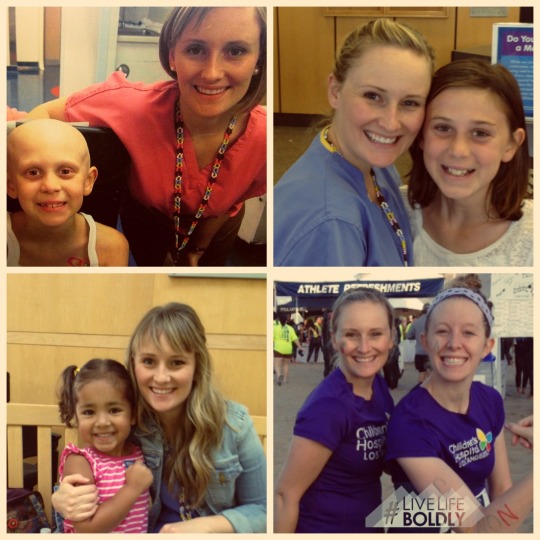
Perhaps because I did not have any family or acquaintances in the medical field, God used a different avenue to expose me to the nursing profession. At the time, my favorite movie was The English Patient, in which a military nurse named Hana leaves her post in the war to devote herself to the care of a dying man. Her character’s actions resonated with me on a deep level - what greater gift and purpose is there than to devote oneself to minimizing the suffering of a fellow human being? And what could possibly be more fulfilling? Perhaps it is not surprising that I gravitated towards oncology, where suffering and grief are often present. After my pediatric rotation in school, I knew I was a “peds person”. Being an instrument of healing for these little ones so full of wonder, joy and innocence was hands down the most incredible first job I could have hoped for. For 8 years, I had the amazing opportunity to care for pediatric oncology patients and their families as a bedside nurse, which brought the tremendous privilege of journeying with them through one of the arguably most trying time of their lives.

Putting the words “child” and “cancer” together in your job description often creates a knee jerk response. “How do you do that, isn’t that depressing?” “How can you stand to see kids suffer?” Ironically, to me adult oncology is much more heart wrenching. As adults we fully comprehend what the “C” word entails - how it has the potential to disrupt our lives, fill us with fear and turn our worlds upside down. Mercifully, many pediatric oncology patients are not mature enough to grasp the gravity nor complexity of their diagnoses. And though it is not always possible to prevent treatment side effects such as nausea, pain and infections, as a team we create a safe and comfortable environment with many happy distractions such as playrooms and doggy visits. Notably, children have a level of strength and resiliency that can humble any adult. They bravely get their shots, become accustomed to sleep disrupted by vital signs and medical assessments, take their medicines like champs, and undergo routine procedures such as spinal taps and central line dressing changes often without complaints or tears. They truly are pint-sized little warriors.

While every patient along the way leaves their mark, certain situations do stand out. As peds hem/onc nurses, we never forget the patients who earn their “angel wings” while under our care, or when a child we are particularly close with relapses. Our hearts grieve when saying goodbye to a child who leaves the hospital to spend their remaining days surrounded by the people and things they love. While there are many heartbreaking moments such as these, there are also countless moments of joy, tenderness and triumph. Particularly sweet are the bonds we create with special patients and also parents who whole-heartedly trust us to care for their precious son or daughter. We are touched when patients and families who would otherwise be virtual strangers, support and encourage each other through the dark days. We laugh and cheer while singing the “happy last chemo” song to an exuberant patient after their very last treatment, while his mother captures the moment on camera as she sheds happy tears. Strangely, as glad as they are to leave us, and us them, both parties feel the loss of the well established relationships. When you weather such a storm together and the time comes to separate, one feels as though she is saying goodbye to a beloved family member.
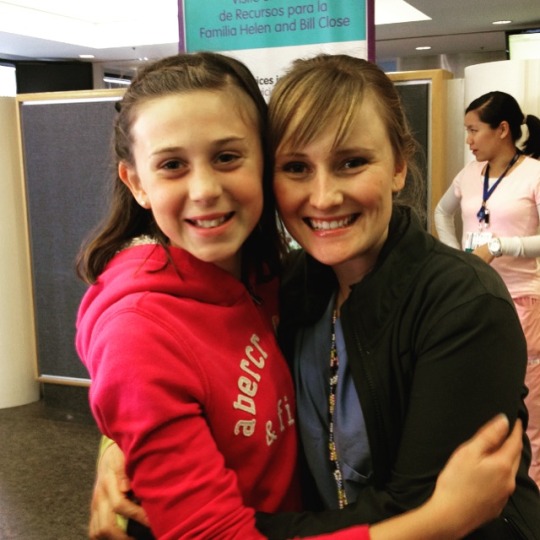
Despite the burdens they face, many of our families use their circumstances to create meaningful change in the lives of others. We have had parents and siblings come to work at the hospital after their loved one has passed, parents who have lost their child become mentors for other parents in the early stages of the grieving process. Families have started organizations to honor their children, spread awareness and raise funds for childhood cancer research. One family honors their daughter’s memory every Thanksgiving by serving all the hospitalized children and their families a traditional holiday meal. Gestures such as these remind me of God’s ability to create beauty from ashes.
People often say that those who go into pediatric oncology are answering a calling, and perhaps they are right. Yet to those of us in the field, we feel incredibly lucky to walk alongside and care for these inspiring children and their families. We know how blessed we are to make a difference in the lives of sick children each day. To summarize an article by Sara Judd (a peds hem/onc nurse in Utah) although we see suffering, heartache, frustration, fear and sometimes despondency, we see the greater theme of hope. Hope for cures, brighter futures, normal childhoods, and the day where pokes and medicines become distant memories. And thankfully, those hopes are often realized. One of the best parts of our job is bumping into a previous patient who bears a full head of baby-soft hair, smiles and stories of their post-chemo adventures.
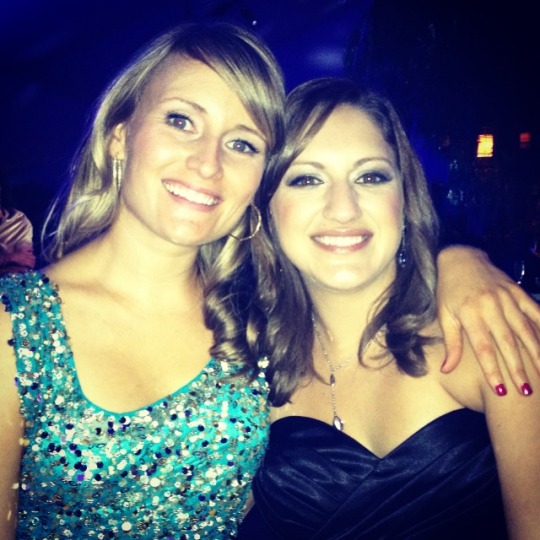
Above all dressed up at the Gala in support of the hospital
So when asked how I can do my job, my knee-jerk response is “How could I not?” Writing this has caused me to take pause and truly reflect on how lucky I am to work where I do, alongside amazing healthcare professionals, and with the cutest bald tykes you could ever imagine. May God give everyone the opportunity to find such purpose and joy in their occupation. I am so grateful I asked, listened and responded to the direction I received once upon a time on a morning run.
Note- All photos used of the patients were used with patients/parents approval
Gene Therapy Reverses Effects of Autism-Linked Mutation in Brain Organoids
In a study published May 02, 2022 in Nature Communications, scientists at University of California San Diego School of Medicine used lab-grown human brain organoids to learn how a genetic mutation associated with autism disrupts neural development. Recovering the function of this single gene using gene therapy tools was effective in rescuing neural structure and function.
Autism spectrum disorders (ASD) and schizophrenia have been linked to mutations in Transcription Factor 4 (TCF4), an essential gene in brain development. Transcription factors regulate when other genes are turned on or off, so their presence, or lack thereof, can have a domino effect in the developing embryo. Still, little is known about what happens to the human brain when TCF4 is mutated.
To explore this question, the research team focused on Pitt-Hopkins Syndrome, an ASD specifically caused by mutations in TCF4. Children with the genetic condition have profound cognitive and motor disabilities and are typically non-verbal.
Using stem cell technology, the researchers created brain organoids, or “mini-brains,” using cells from Pitt-Hopkins Syndrome patients, and compared their neurodevelopment to controls.
They found that fewer neurons were produced in the TCF4-mutated organoids, and these cells were less excitable than normal. They also often remained clustered together instead of arranging themselves into finely-tuned neural circuits. This atypical cellular architecture disrupted the flow of neural activity in the mutated brain organoid, which authors said would likely contribute to impaired cognitive and motor function down the line.
The team thus tested two different gene therapy strategies for recovering the functional TCF4 gene in brain tissue. Both methods effectively increased TCF4 levels, and in doing so, corrected Pitt-Hopkins Syndrome phenotypes at molecular, cellular and electrophysiological scales.
“The fact that we can correct this one gene and the entire neural system reestablishes itself, even at a functional level, is amazing,” said senior study author Alysson R. Muotri, PhD, professor at UC San Diego School of Medicine.
The team is currently optimizing their recently licensed gene therapy tools in preparation for future clinical trials, in which spinal injections of a genetic vector would hopefully recover TCF4 function in the brain.
— Nicole Mlynaryk
Post link
Excess Neuropeptides Disrupt Lung Function in Infant Disease and COVID-19
Excess fluid in the lung can significantly disrupt lung function and gas exchange, but researchers at University of California San Diego School of Medicine were surprised to find that neuropeptides may be to blame.
In a study published March 17, 2022 in the journal Developmental Cell, scientists show that excessive neuropeptide secretion by neuroendocrine cells in the lungs can lead to fluid buildup and poor oxygenation. However, blocking the neuropeptide signals with receptor antagonists prevented the leakage and improved blood-oxygen levels, suggesting that neuropeptides may be a promising therapeutic target for conditions marked by excess lung fluid.
This mechanism was discovered in the context of neuroendocrine cell hyperplasia of infancy (NEHI), a lung disease affecting infants in which lung size and structure appear normal but blood-oxygen levels are consistently low. Its defining feature is an increase in the number of pulmonary neuroendocrine cells (PNECs), but until now, physicians did not know how these cells contributed to the disease.
In the new study, researchers confirmed that PNECs and their neuropeptide products are the drivers of NEHI, but also showed that PNEC numbers were increased in the lungs of COVID-19 patients with excess lung fluid. This suggests a similar mechanism may contribute to COVID-19 symptoms.
The study was led by Xin Sun, PhD, professor of pediatrics at UC San Diego School of Medicine and the Division of Biological Sciences.
“We were surprised to find that neuropeptides can play such a major role in gas exchange,” said Sun. “Researchers are just starting to appreciate the relationship between the nervous system and the lungs, but the more we understand it, the more we can modulate it to treat disease.”
Pictured above: An angiogram of blood vessels in the NEHI mouse lung shows multiple sites of fluid leakage, marked by yellow arrowheads.
— Nicole Mlynaryk, Bigelow Science Communication Fellow
Post link













